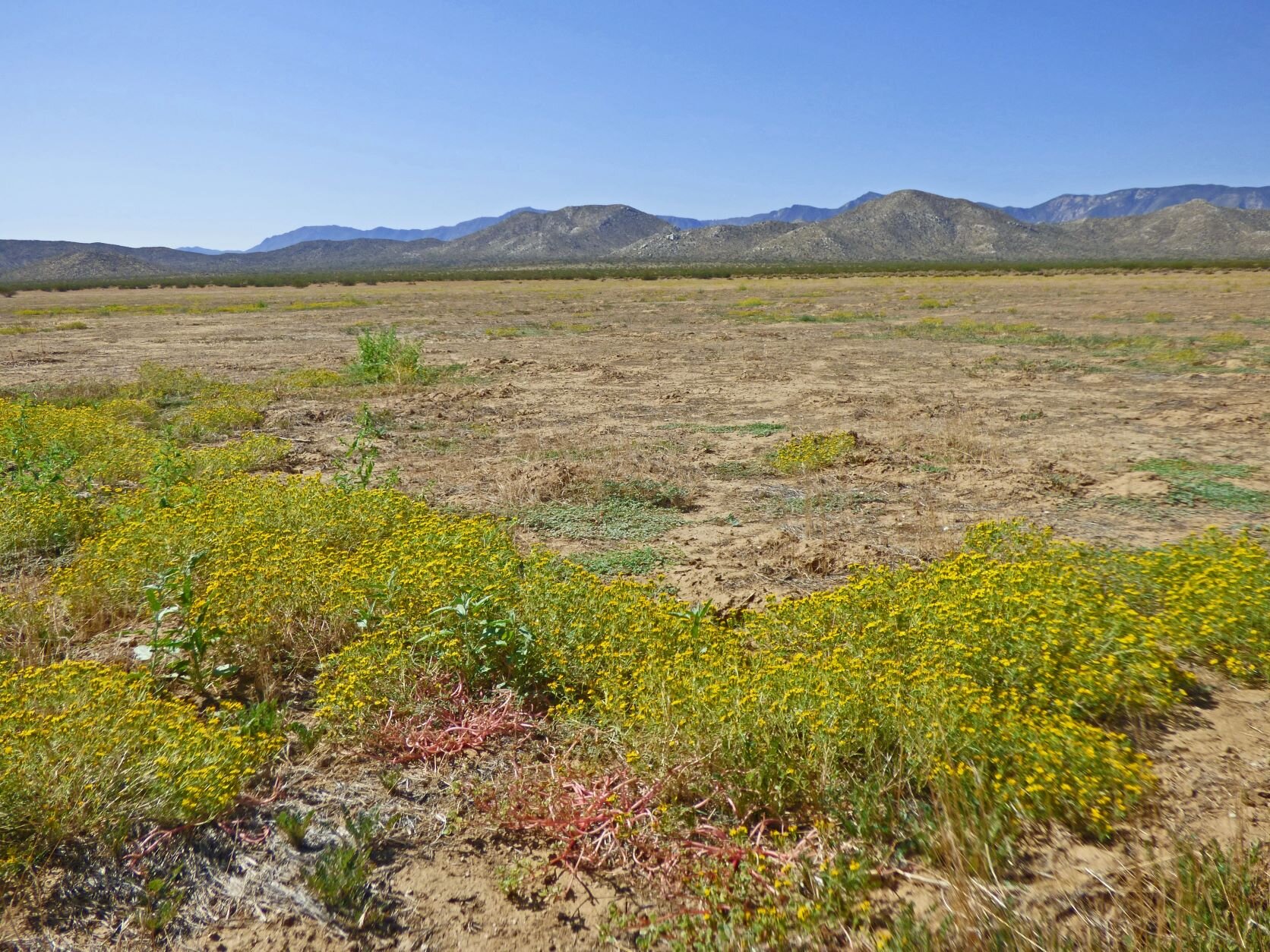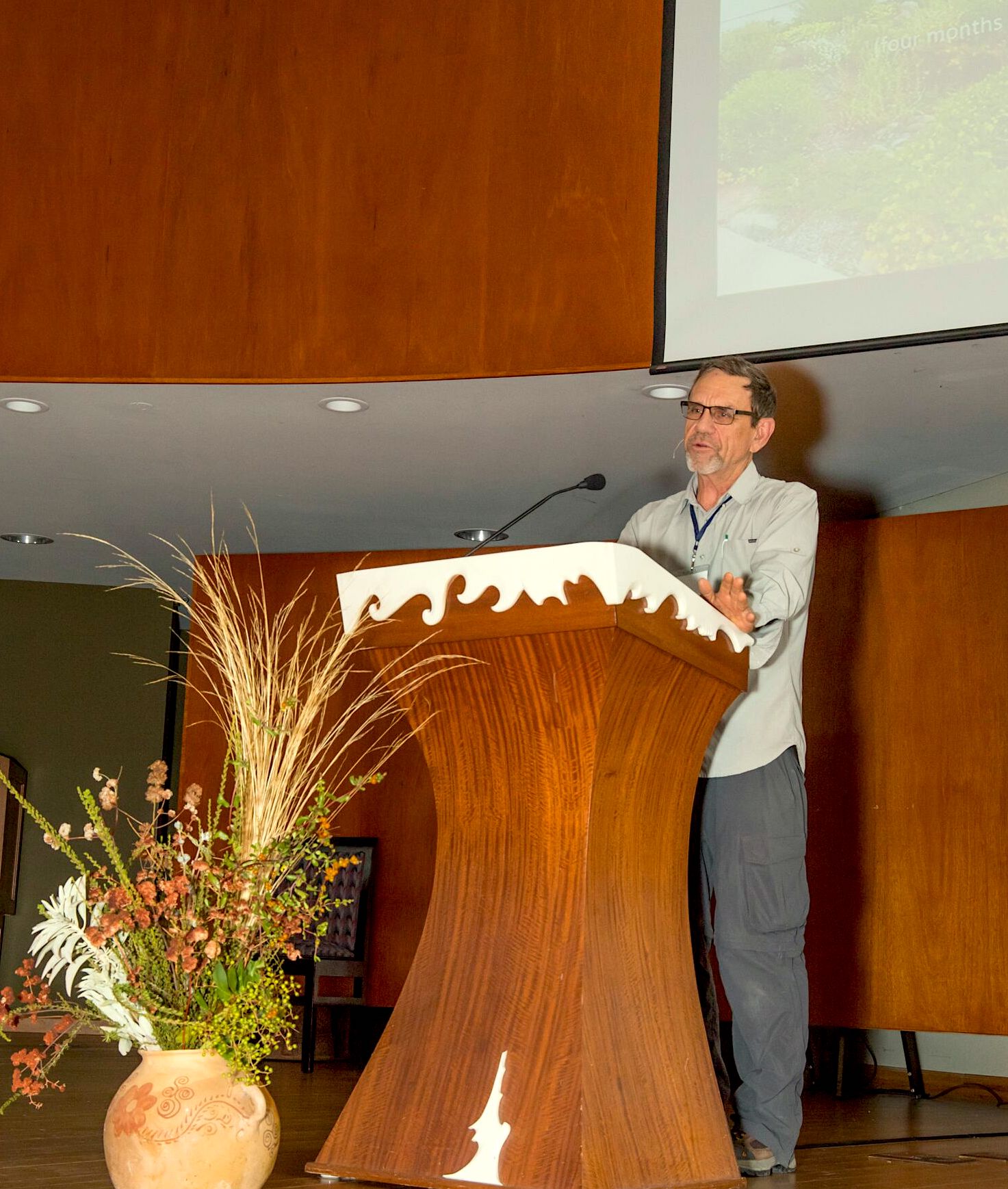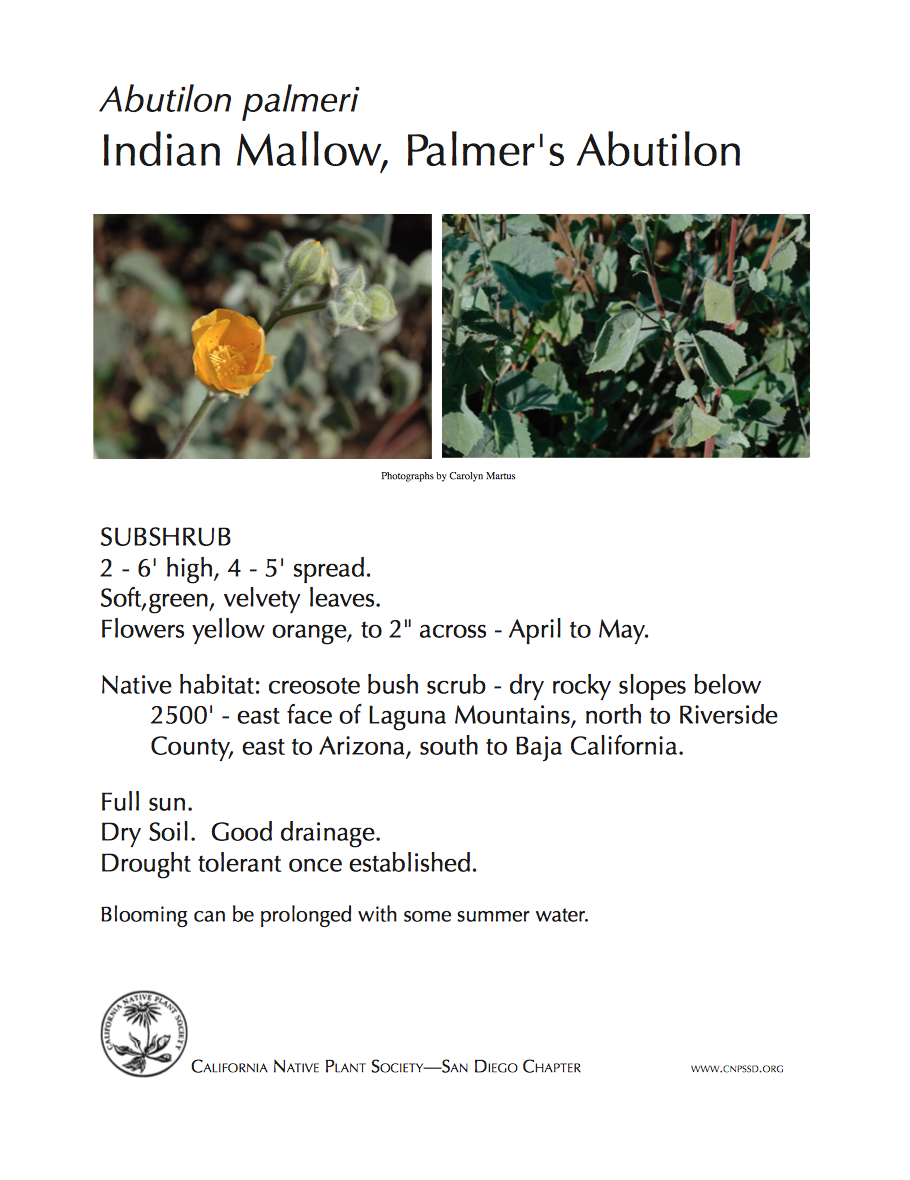By Kay Stewart
About four years ago Betsy Cory rallied her fellow gardeners in the Chula Vista Garden Club to plant scented California Native Plants in a courtyard garden in the Chula Vista South Branch Library. In addition, a series of beautiful information panels were installed that explain the garden. They were created by two of Betsy's friends.
In October the garden was dedicated to Betsy's memory. A group of her friends gathered for the dedication. Several in attendance agreed to come for a maintenance party in a few weeks. So in November a group of five Garden club members met me at the garden and we spruced it up, and planted twenty more scented plants. The majority of plants were donated by the San Diego Chapter of CNPS.
The library's irrigation tech will keep an eye on the courtyard to be sure the new plants receive the water they need. A member of the garden club will also make a weekly visit to check up on it and to hand-water some lovely large blue pots with plants.
Members of the Garden Club are now working on ideas for how to bring classes to the garden so teachers can use it as part of their classroom curriculum.




























